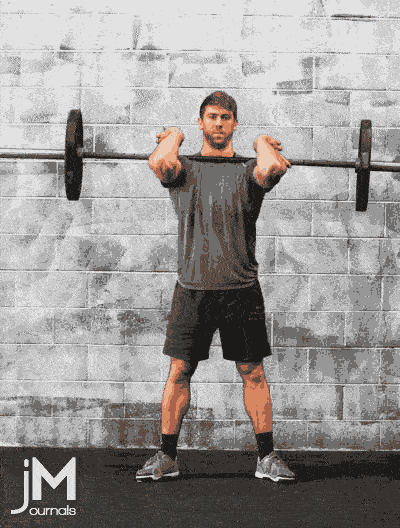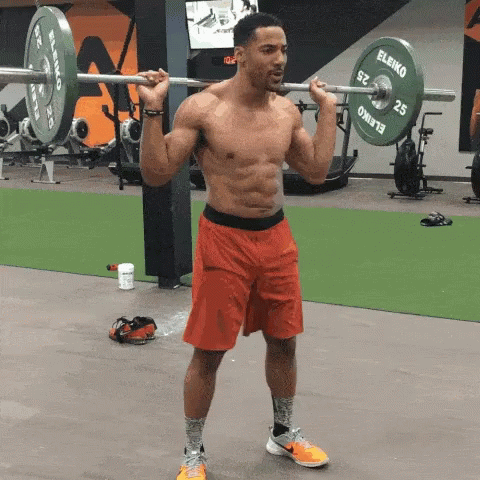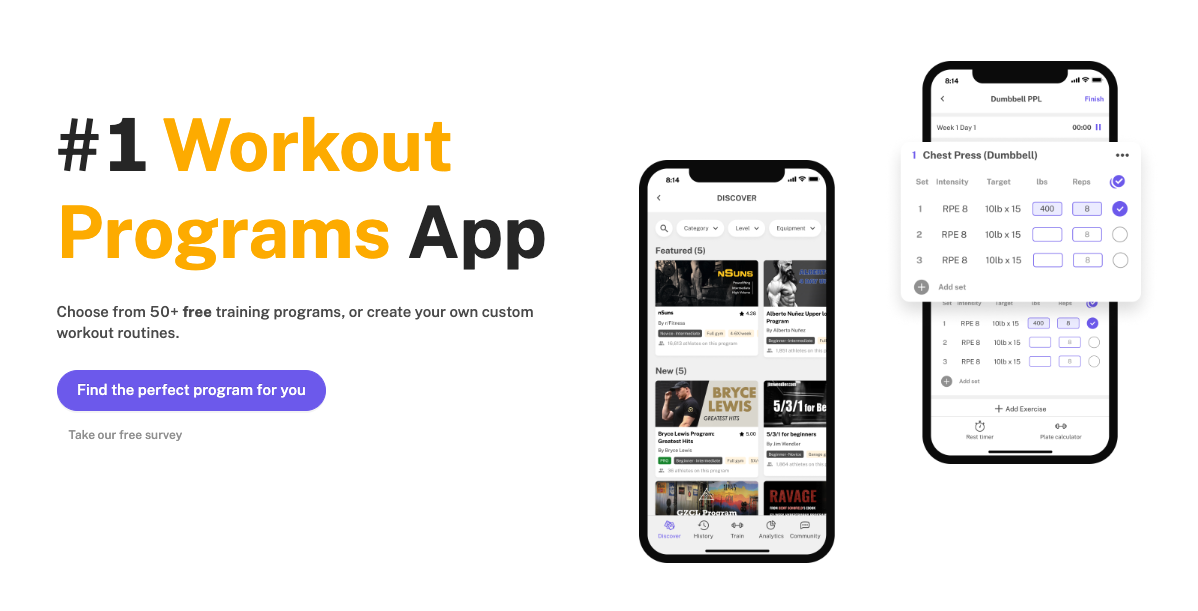Leg-Building: Front Squat vs. Back Squat Comparison
Written by The Boostcamp Editors
Front Squat vs. Back Squat: Which Builds Stronger Legs?
If you're on the quest to build up the size and strength in your legs, one of the best exercises that you can add to your training routine is the barbell squat. You've more than likely come across two popular squat variations which are the front squat and the back squat, also known as the squat position, both of which are great for leg day and leg hypertrophy and building muscle mass. But which one is best for you? There are different ways to modify these exercises to better suit your fitness level, goals, and needs.
In this comprehensive guide, we'll explore the front squat vs. back squat debate, breaking down the similarities and differences between each exercise, their benefits, and how to incorporate them into your workout routine, whether you are looking to compete in bodybuilding or powerlifting, to achieve your fitness goals. We'll also tackle the 10 most frequently asked questions related to the front squat vs the back squat, including how the front squat form can help improve your upright position and posture, strengthen your legs and lumbar spine, and the importance of mastering the proper form for a bodyweight squat movement before adding weight and returning to a standing position.
What is the Front Squat?
The front squat is a lower-body compound exercise that primarily targets your quadriceps, with secondary emphasis on your glutes, hamstrings, and core. In this squat variation, the barbell is placed across the front of your shoulders, just above your collarbone.
How to Perform the Front Squat:
Stand with your feet shoulder-width apart, toes pointing slightly outwards.
Position the barbell across the front of your shoulders, just above your collarbone. Cross your arms, gripping the bar with your fingertips, and keep your elbows high.
Inhale deeply and brace your core.
Lower yourself into the squat by bending your knees and hips simultaneously, keeping your chest up and back straight.
Descend until your thighs are parallel to the ground or slightly below.
Exhale as you push through your heels to return to the starting position.

Why do the Front Squat:
The front squat is an excellent exercise for targeting the quadriceps and building lower body strength. It also requires greater core engagement and upper back strength to maintain proper form, making it a fantastic full-body exercise.
What is the Back Squat?
The back squat is another lower-body compound exercise that targets the legs as a whole, meaning the quadriceps, glutes, hamstrings, and posterior chain are all worked during this exercise, as well as the core strength and muscle activation. A very large differentiation between the front squat and the low bar squat lies in the barbell placement. In a high bar squat, also known as a powerlifting squat, the barbell is placed on your upper back and shoulders, targeting the posterior chain muscles such as the trapezius, lower back, glutes, and hamstrings while maintaining an upright torso position. This exercise also helps build quad strength, making it an effective variation for those looking to specifically target their quadriceps.
How to do the Back Squat:
Stand with your feet shoulder-width apart, toes pointing slightly outwards.
Place the barbell on your upper back, just below the base of your neck. Grip the bar slightly wider than shoulder-width, with your elbows pointing down and slightly back.
Inhale deeply and brace your core.
Lower yourself into the squat by bending your knees and hips simultaneously, maintaining a straight back and upright chest.
Descend until your thighs are parallel to the ground or slightly below.
Exhale as you push through your heels to return to the starting position.

Why do the Back Squat:
The back squat is a classic lower body strength-building exercise that targets the same muscles as the front squat, with a more significant emphasis on the glutes and hamstrings. It allows for heavier loads and is a staple in most strength and conditioning programs.
Pros and Cons of the Front Squat vs. Back Squat
The best way to compare the front squat and the back squat to each other is to measure them up right against each other, checking the pros and cons of each squat variation.
Front Squat Pros:
Greater quadriceps activation
Increased core and upper back engagement
Less stress on the lower back
Improved posture and mobility
Front Squat Cons:
Less weight lifted compared to the back squat
Requires more wrist and shoulder flexibility
Can be challenging to learn proper form
Back Squat Pros:
Allows for heavier loads
Greater glute and hamstring activation
More accessible for beginners
Staple exercise in competitive powerlifting
Back Squat Cons:
Increased stress on the lower back (which can lead to injury)
Less emphasis on quadriceps compared to the front squat
Importance of Squats in a Workout Program
Both front squats and back squats are essential exercises for building lower body strength, power, and muscle growth, making them crucial for sports performance outcomes and athlete’s ability, especially for older adults. Incorporating these squat variations into your workout program can improve your overall fitness, athleticism, and functional movement abilities by targeting multiple muscle groups and enhancing athletic performance. By understanding the unique benefits and challenges of each exercise, you can choose the best squat variation to help you achieve your specific fitness goals, including improved sports performance.
Front Squat vs. Back Squat FAQs
Which squat variation is better for building overall leg strength?
Both front and back squats are effective for building leg strength, but the back squat allows for heavier loads, making it slightly better for overall leg strength development.
Which squat variation is better for targeting the quadriceps?
The front squat places more emphasis on the quadriceps compared to the back squat.
Which squat variation is better for targeting the glutes and hamstrings?
The back squat targets the glutes and hamstrings more effectively than the front squat.
Which squat variation is easier to learn?
The back squat is generally easier for beginners to learn and requires less mobility and flexibility in the wrists and shoulders.
Can I include both squat variations in my workout program?
Yes, including both squat variations in your workout program can help develop well-rounded lower body strength and muscle balance.
How often should I perform squats in my workout program?
This depends on your goals and fitness level, but typically, performing squats 2-3 times per week is recommended for optimal strength and muscle development.
Can I do squats if I have lower back pain?
Consult with a medical professional before performing any exercise with existing lower back pain. If cleared, front squats may be a better option due to reduced stress on the lower back.
How do I progress in my squat strength?
To progress in squat strength, follow a proven training program made by world-class coaches, which you can find on Boostcamp App for free.
Can I do squats if I am pregnant or postpartum?
Always consult with your healthcare provider before performing any exercise during pregnancy or postpartum. If cleared, squats can be modified to accommodate your changing body and support overall strength and mobility.
Can I perform squats with dumbbells or kettlebells instead of a barbell?
Yes, performing squats with dumbbells or kettlebells is an excellent alternative for those who do not have access to a barbell or prefer a different training modality.
Front Squat vs. Back Squat Conclusion
In the front squat vs. back squat debate, the best squat variation ultimately depends on your individual goals, preferences, and mobility. Both exercises provide numerous benefits for lower body strength and muscle development, and incorporating either or both into your workout program can help you achieve well-rounded fitness results. Use the information provided in this guide to make an informed decision and optimize your training for success.
Are you looking to improve your squat game? Boostcamp App offers free and proven workout programs from world-class coaches for powerlifting, bodybuilding, and powerbuilding. You can also easily create your own workout routines and log your custom workouts. Boostcamp is the last lifting app you’ll ever need.


